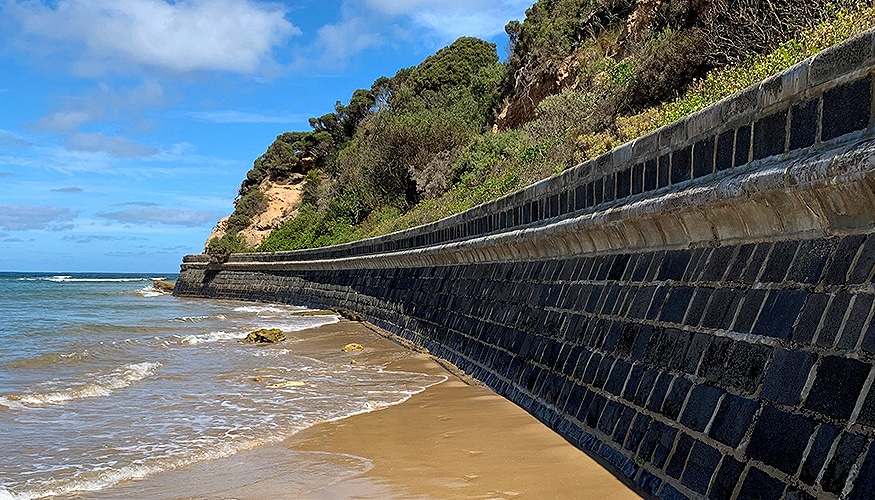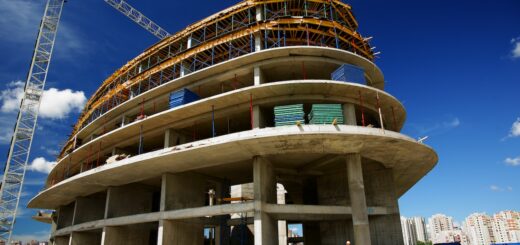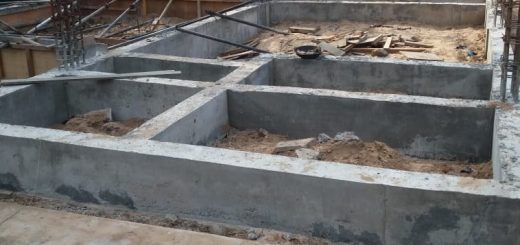Design Considerations for Coastal Structures
Coastal areas are prone to erosion and wave forces, making the design of coastal structures a critical aspect of coastal engineering. Whether it’s a seawall, breakwater, or revetment, these structures must be carefully designed to withstand environmental pressures while minimizing their impact on the surrounding ecosystem. In this article, we will explore the key design considerations that need to be taken into account when designing coastal structures.
Coastal structures refer to engineered constructions built along coastlines to provide protection against erosion, storm surges, and wave action. Their design plays a vital role in safeguarding coastal communities, infrastructure, and natural habitats.
Environmental Factors to be Considered
Coastal Erosion
Coastal erosion is a natural process that can be exacerbated by human activities. Understanding the erosion patterns and rates is crucial for designing effective coastal structures.
Wave Action and Forces
Waves exert significant forces on coastal structures, necessitating careful consideration of wave characteristics, such as height, period, and direction, to determine design parameters.
Tides and Currents
Tides and currents can affect the stability and functionality of coastal structures. Designing structures that can withstand tidal fluctuations and strong currents is essential.
Geotechnical Considerations
A geotechnical investigation shall be carried out before starting the design. Infromation gathered at the investigation will be the based for the design and construction.
Soil Composition
The soil composition at the construction site influences the stability and load-bearing capacity of coastal structures. Detailed soil investigations are crucial for proper design and foundation considerations.
Seabed Stability
The stability of the seabed beneath coastal structures is vital for long-term performance. Factors like erosion, sedimentation, and liquefaction must be taken into account during the design phase.
Foundation Design
Coastal structures require robust foundation designs to ensure stability and prevent settlement or tilting. The foundation type and depth must be carefully determined based on geotechnical assessments.
Structural Design
Material Selection
Choosing appropriate construction materials that can withstand harsh coastal environments, including saltwater corrosion and UV degradation, is essential for the longevity of coastal structures.
In addition, consideration of the grade of concrete that affect the durability requirement also very important. Accordingly, the specify the concrete shall be done in a way that it can resist the attack from chlorides, sulfates, etc.
Load Calculations
Accurate load calculations considering wave forces, hydrostatic pressures, and storm surge levels are crucial for designing structurally sound coastal structures capable of resisting extreme events.
Structural Stability
Ensuring the structural stability of coastal structures is vital to prevent failure and protect lives and property. Factors such as adequate cross-sectional design, reinforcement detailing, and structural connections must be carefully considered.
Overturning, sliding, etc. are the most dominant aspects of the stability of the structure. Depending on the nature of the structure, type of the foundation can be decided. Some of the coastal structures are gravity structures rested on the ground and some are on the piles.
Wave Energy Dissipation
Coastal structures must dissipate the energy of incoming waves to reduce their impact on the shoreline and adjacent areas. Various methods can be employed for wave energy dissipation:
Breakwaters
Breakwaters are offshore structures designed to reduce wave energy by acting as a barrier. They can be submerged or emerged and are constructed parallel or perpendicular to the shoreline, depending on the intended purpose.
Seawalls
Seawalls are vertical or near-vertical structures built along the shoreline to prevent erosion and wave overtopping. Their primary function is to reflect or absorb wave energy, protecting the land behind them.
Revetments
Revetments are sloping structures composed of natural or artificial materials that protect shorelines from erosion caused by wave action. They dissipate wave energy through hydraulic stability and absorption.
Environmental Impact Assessment
Coastal structures can have significant environmental impacts. Conducting thorough environmental impact assessments is essential to minimize adverse effects and ensure ecological sustainability.
Construction of a coastal structure would affect some other area as well due to the changes made to the behavior of the sea. Therefore, detailed assessment on the construction and its related aspects are very vital.
Ecological Considerations
Preserving and protecting coastal ecosystems is critical when designing coastal structures. Mitigating impacts on habitats, migratory routes, and vulnerable species should be a priority.
Habitat Protection Measures
Implementing measures to safeguard and enhance habitats, such as creating artificial reefs or designing structures that support ecological niches, can promote biodiversity conservation.
Mitigation Strategies
Developing mitigation strategies to minimize environmental impacts, such as noise pollution during construction or artificial lighting affecting marine organisms, is vital for sustainable coastal development.
Designing coastal structures requires careful consideration of environmental factors, geotechnical aspects, structural design, wave energy dissipation, coastal adaptation strategies, environmental impact assessment, maintenance, and monitoring. By incorporating these considerations, coastal structures can be built to withstand coastal hazards while preserving the surrounding ecosystem.
FAQs
Q1. How long does it take to design a coastal structure?
The design duration depends on various factors, such as project complexity, size, environmental conditions, and regulatory requirements. Typically, it can take several months to a year to complete the design phase of a coastal structure.
Q2. What materials are commonly used in coastal structure construction?
Common materials used in coastal structure construction include concrete, steel, timber, and composite materials. The selection of materials depends on factors such as durability, resistance to corrosion, and the specific requirements of the project.
Q3. How do coastal structures contribute to habitat protection?
Coastal structures can incorporate features that enhance habitat protection. For example, artificial reefs can be designed within breakwaters, providing habitats for marine organisms. Additionally, creating gaps or openings in seawalls allows for the movement of water and promotes the exchange of nutrients, benefiting coastal ecosystems.
Q4. Are coastal structures resilient to climate change impacts?
Coastal structures designed with climate change in mind aim to be more resilient. By considering factors like sea-level rise, increased storm intensity, and changing wave conditions, engineers can incorporate adaptive features and design approaches that help withstand future climate challenges.
Q5. How often should coastal structures be inspected?
Regular inspections of coastal structures should be conducted at least annually. However, the frequency may vary depending on the specific structure, its age, and the prevailing environmental conditions. Following severe weather events, it’s important to conduct post-event inspections to assess any damage or structural concerns.




